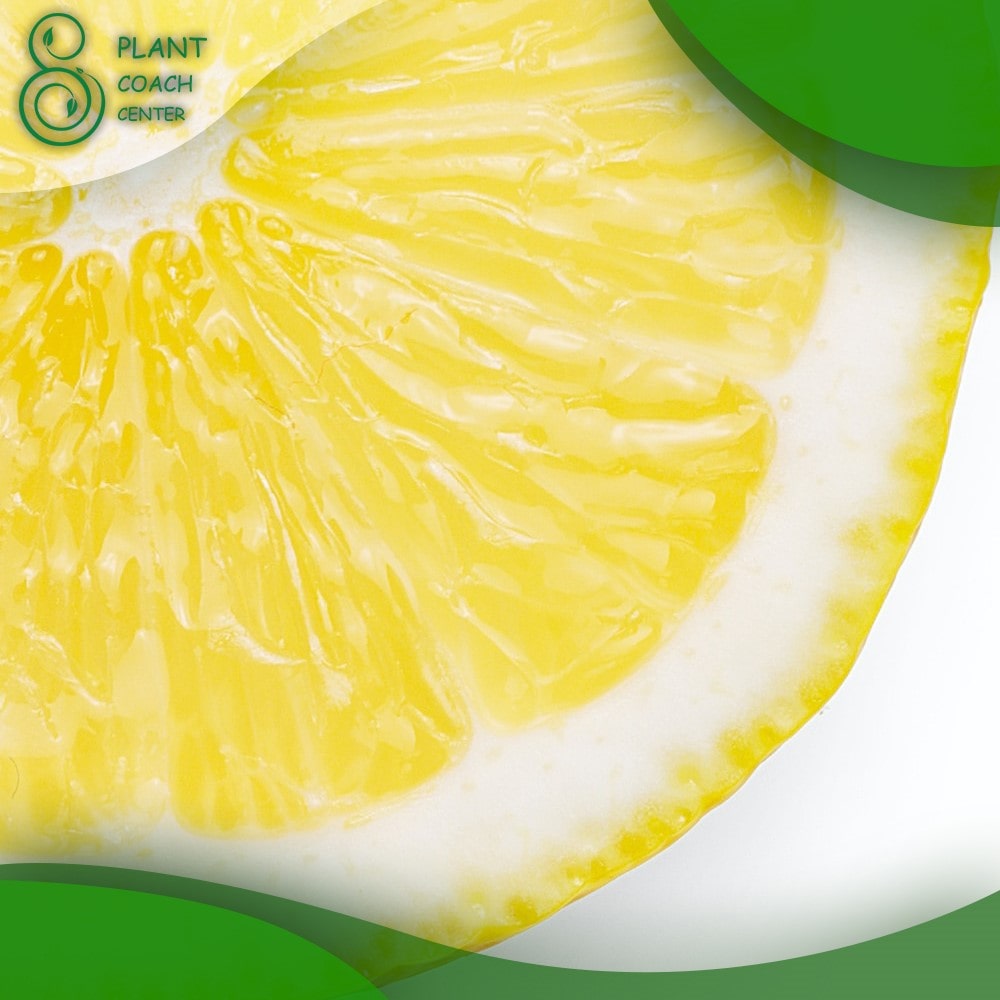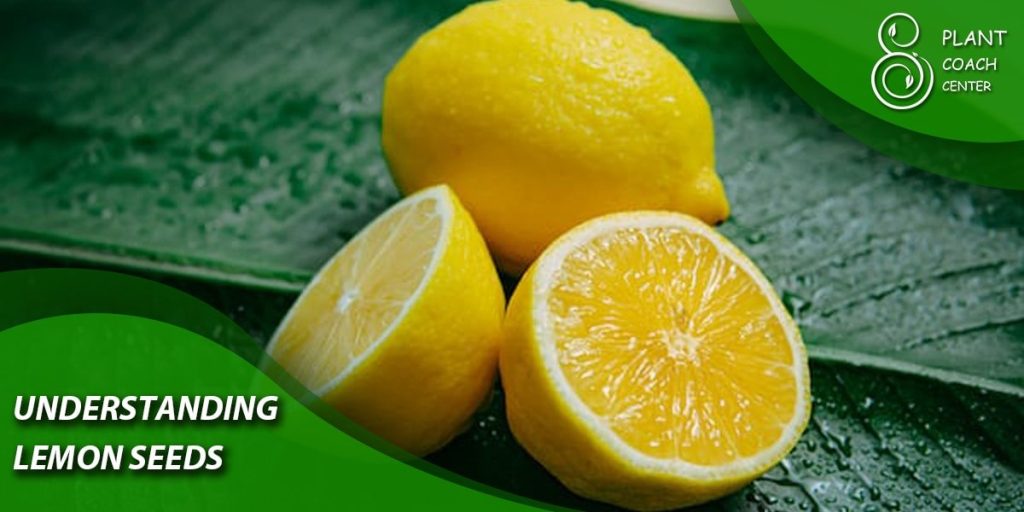When to Plant Lemon Seeds
Introduction to Lemon Seeds
Lemon seeds are the gateway to growing your very own lemon tree. Before we dive into the intricacies of planting lemon seeds, let’s explore the benefits of starting from seeds and the factors that affect lemon seed planting.
- Overview of Lemon Seeds
Lemon seeds, also known as citrus seeds, are the reproductive units of the lemon fruit. Within these tiny seeds lies the potential to grow a robust lemon tree that can provide you with a bountiful harvest of tangy, vitamin-rich lemons.
- Benefits of Growing Lemon Trees from Seeds
- Cost-effectiveness: Growing lemon trees from seeds is an economical option compared to purchasing nursery-grown saplings.
- Personal satisfaction: Witnessing the entire life cycle of a lemon tree, from seed to fruit-bearing maturity, is a fulfilling experience.
- Genetic diversity: Planting seeds allows for the discovery of unique lemon tree varieties with distinct characteristics.
- Educational value: Growing lemon trees from seeds can be an excellent learning opportunity for both children and adults.
- Factors Affecting Lemon Seed Planting
Successful lemon seed planting depends on several factors that influence seed germination and growth. Understanding these factors will help you make informed decisions when it comes to choosing the right time to plant your lemon seeds.
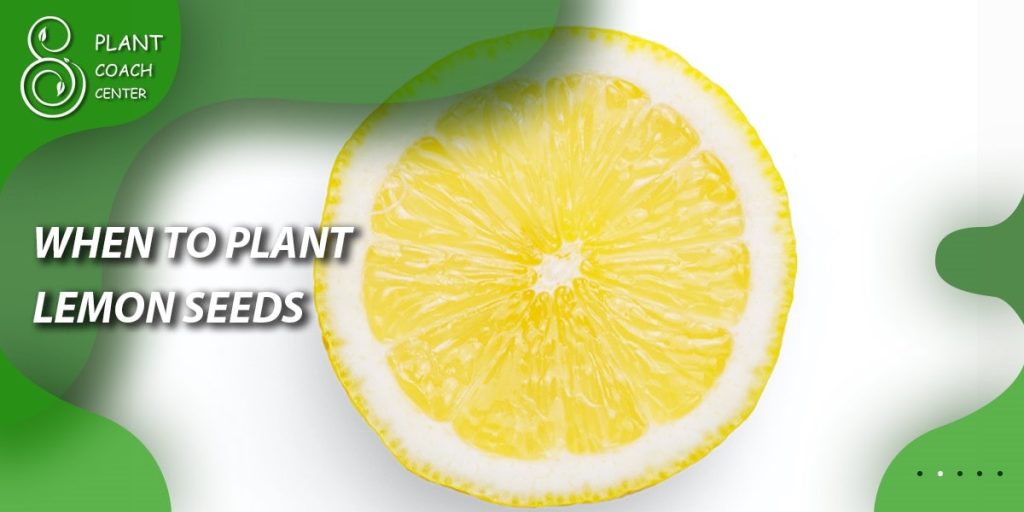
Understanding Lemon Seeds
To optimize your chances of success, it’s essential to familiarize yourself with the anatomy of lemon seeds, different lemon seed varieties, and their viability and germination rates.
- Anatomy of a Lemon Seed
Lemon seeds have a protective outer seed coat, an embryo within, and a food reserve that nourishes the developing seedling. Understanding the structure of lemon seeds will provide insights into their germination requirements.
- Lemon Seed Varieties
There are various lemon seed varieties available, each with its unique characteristics. Popular lemon varieties include Eureka, Lisbon, Meyer, and Ponderosa. Researching and selecting the right variety for your needs and climate is crucial.
- Lemon Seed Viability and Germination Rates
The viability and germination rates of lemon seeds can vary depending on several factors, including the seed’s age, quality, and storage conditions. It’s important to assess the viability of your lemon seeds before planting to maximize your chances of success.
Determining the Right Time to Plant Lemon Seeds
Timing plays a vital role in lemon seed planting. Considering climate conditions, seasonal factors, and understanding seed dormancy and stratification will help you choose the optimal time for planting.
- Climate Considerations for Lemon Seed Planting
- Optimal Temperature Range for Germination: Lemon seeds thrive in temperatures between 70°F and 85°F (21°C and 29°C). Providing a warm and stable environment is crucial for successful germination.
- Frost and Cold Protection Measures: Lemon seeds are susceptible to cold temperatures. Take precautions to protect them from frost and provide adequate insulation during colder months.
- Regional Climate Variations and Adaptations: Different lemon varieties have varying degrees of cold and heat tolerance. Researching your specific region’s climate and the adaptability of lemon varieties will help you determine the best planting time.
- Seasonal Factors Affecting Lemon Seed Planting
- Spring Planting: Spring is generally considered the most favorable time for planting lemon seeds, as it provides optimal temperature and light conditions for germination and early growth.
- Summer Planting: In regions with mild summers, planting lemon seeds in late spring or early summer can be successful. Ensure adequate moisture and protection from excessive heat.
- Fall Planting: Fall planting can be challenging due to decreasing temperatures. However, in warmer climates, late summer or early fall planting can allow seedlings to establish roots before winter.
- Winter Planting: Winter planting is not recommended in most regions, as the cold temperatures can hinder germination and seedling growth. However, in mild-winter areas, protected planting may be possible.
- Understanding Lemon Seed Dormancy and Stratification
- Breaking Seed Dormancy: Lemon seeds often have a dormant period, requiring specific conditions to initiate germination. Techniques such as scarification, soaking, or stratification can help break seed dormancy.
- Stratification Techniques: Stratification involves exposing seeds to cold temperatures fora specific duration to simulate natural winter conditions. This process helps promote germination once the seeds are planted.
- Recommended Duration for Seed Treatment: The duration of seed treatment varies depending on the lemon seed variety and dormancy requirements. Research the specific needs of your lemon seeds to determine the ideal stratification period.
Preparing for Lemon Seed Planting
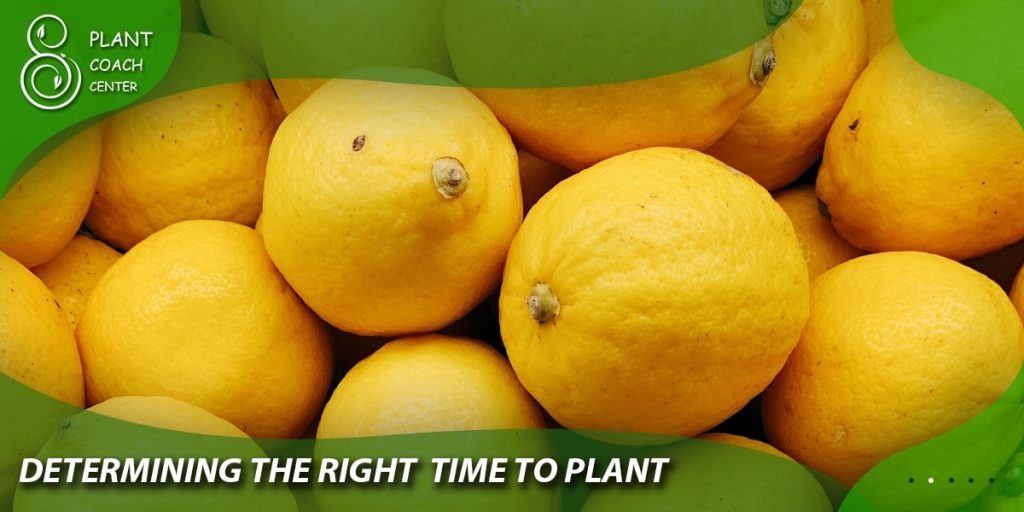
Proper preparation is key to successful lemon seed planting. This section covers selecting the right seeds, preparing them for planting, and choosing appropriate planting containers and soil.
- Selecting the Right Seeds
- Purchasing Seeds vs. Harvesting from Fruit: You have the option to purchase lemon seeds from reputable suppliers or harvest them from ripe lemons. Ensure that the selected seeds are fresh, viable, and disease-free.
- Seed Quality and Purity Considerations: Opt for high-quality lemon seeds that exhibit no signs of damage or deformities. Additionally, ensure that the seeds are true to the lemon variety you desire.
- Seed Storage and Preservation: Proper storage conditions, such as cool and dry environments, help maintain seed viability. Store seeds in airtight containers in a refrigerator until you’re ready to plant.
- Seed Preparation and Scarification
- Seed Cleaning and Disinfection: Clean the lemon seeds by removing any pulp or flesh attached to them. Disinfecting the seeds with a mild bleach solution can help minimize the risk of fungal or bacterial infections.
- Soaking and Pre-Soaking Techniques: Soaking lemon seeds in water for several hours or overnight can help soften the seed coat and promote germination. Pre-soaking in a growth-promoting solution may enhance seedling vigor.
- Seed Scarification Methods: Some lemon seeds have a hard seed coat that may require scarification to enhance water absorption and germination. Scarification techniques include nicking, sanding, or using acid treatments.
- Choosing the Right Planting Containers and Soil
- Container Size and Drainage Considerations: Select containers with adequate drainage holes to prevent waterlogging. Choose a container size that allows ample space for root development and future growth.
- Soil Mixtures and pH Levels: Use well-draining potting soil or a mixture of peat moss, perlite, and compost. Aim for a slightly acidic soil pH between 5.5 and 6.5, as lemon trees prefer mildly acidic conditions.
- Organic Amendments and Fertilizers: Incorporate organic matter, such as compost or well-rotted manure, into the soil mixture to improve its fertility. Limit the use of fertilizers during the early stages of seedling growth.
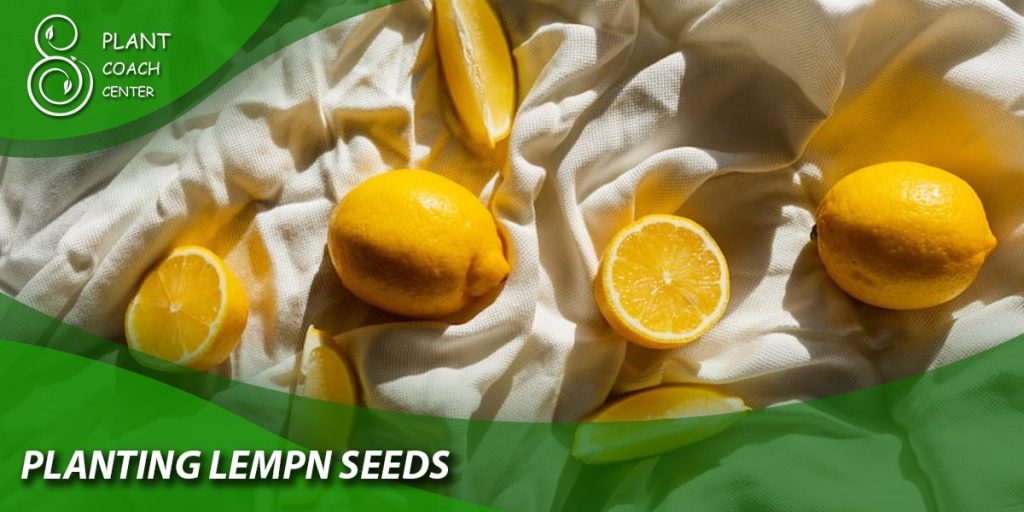
Planting Lemon Seeds
Now that you’ve prepared your lemon seeds and planting materials, it’s time to sow the seeds and provide proper care during the crucial early stages of growth.
- Step-by-Step Planting Guide
- Preparing the Planting Containers:
– Fill the containers with the prepared soil mixture, leaving some space at the top.
– Water the soil thoroughly and allow excess water to drain.
- Sowing Lemon Seeds:
– Place the lemon seeds on the soil surface, spacing them apart.
– Gently press the seeds into the soil, ensuring they are in contact with the moistened soil.
- Proper Watering Techniques:
– Water the planted seeds gently, using a misting spray or a watering can with a fine nozzle, to avoid displacing the seeds.
– Maintain consistent moisture levels by watering whenever the top inch of soil feels dry.
- Placement and Sunlight Requirements:
– Place the containers in a warm location that receives ample sunlight, preferably 8-12 hours of direct sunlight per day.
– Consider using grow lights if natural sunlight is limited.
- Care and Maintenance After Planting
- Watering and Moisture Management:
– Regularly monitor soil moisture levels and ensure the soil remains evenly moist but not waterlogged.
– Adjust watering frequency based on environmental conditions and the moisture needs of the seedlings.
- Temperature and Humidity Control:
– Maintain a warm and stable temperature between 70°F and 85°F (21°C and 29°C) to facilitate seed germination and seedling growth.
– Avoid exposing the seedlings to drastic temperature fluctuations or drafts.
- Pruning and Training Young Lemon Seedlings:
– Once the seedlings develop their first set of true leaves, consider pruning the weaker seedlings to favor the strongest ones.
– Train the remaining seedlings to grow upright by gently bending or staking them.
- Pest and Disease Management Strategies:
– Monitor the seedlings for pests such as aphids, scale insects, or citrus leaf miners. Use organic pest control methods if necessary.
– Prevent fungal diseases by providing good air circulation and avoiding excessive moisture around the seedlings.

Transplanting Lemon Seedlings
As your lemon seedlings grow and develop, they will eventually outgrow their initial planting containers. Transplanting them into larger pots or into the ground is a crucial step in their journey towards becoming mature lemon trees.
- Assessing Seedling Readiness for Transplantation
- Size and Growth Indicators: When the seedlings have developed a sturdy stem, multiple sets of true leaves, and a healthy root system, they are ready for transplantation.
- Timing Considerations: Transplant seedlings when the risk of frost has passed and the weather conditions are favorable for their survival and continued growth.
- Transplantation Techniques
- Selecting Transplantation Containers:
– Choose containers or planting sites that provide ample space for root expansion. Ensure they have proper drainage to prevent waterlogging.
- Transplanting into Containers:
– Gently remove the seedlings from their original containers, being careful not to damage the delicate roots.
– Place the seedlings into the new containers, ensuring they are positioned at the same depth as before.
– Fill the containers with fresh potting soil and lightly press it around the seedlings to secure them.
- Transplanting into the Ground:
– Choose a well-draining planting site with full sun exposure and sufficient space for the lemon tree to grow.
– Dig a hole slightly larger than the root ball of the seedling, ensuring the graft union (if present) remains above ground level.
– Place the seedling in the hole, backfill with soil, and firm it gently around the roots.
- Post-Transplant Care
- Watering and Irrigation:
– Immediately after transplanting, water the seedlings thoroughly to settle the soil and ensure good root-to-soil contact.
– Maintain regular watering until the seedlings are established and show signs of new growth.
- Mulching and Weed Control:
– Apply a layer of organic mulch around the seedlings to retain soil moisture, suppress weed growth, and regulate soil temperature.
– Regularly remove weeds from the vicinity of the lemon seedlings to minimize competition for nutrients.
- Providing Structural Support:
– If transplanting into the ground, consider staking the seedling to provide stability against winds or potential root disturbance.
– Use soft ties or twine to loosely attach the seedling to the stake, avoiding tight bindings that may damage the stem.
- Continued Maintenance and Pruning:
– Monitor the growth of the transplanted seedlings and prune as necessary to shape the tree and promote healthy branching.
– Regularly inspect for pests, diseases, and nutritional deficiencies, addressing any issues promptly.
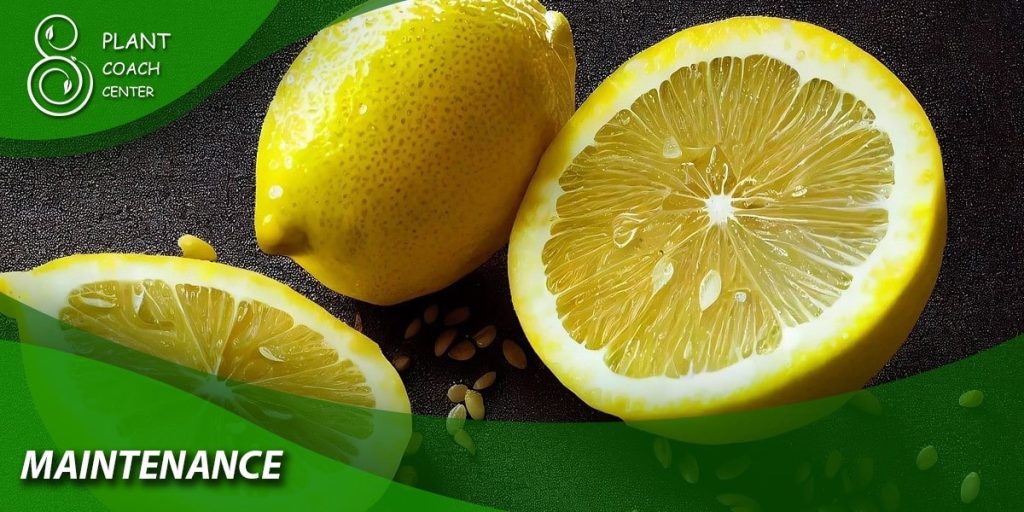
Conclusion
Growing lemon trees from seeds can be a gratifying and fulfilling experience. By understanding the various aspects of lemon seed planting, from seed selection and preparation to determining the right planting time, and providing proper care throughout the growth stages, you can increase your chances of success.
Remember to visit Plant Coach Center (www.plantcoachcenter.com) for more valuable resources and guidance on plant care. With patience, dedication, and the knowledge gained from this comprehensive guide, you’ll be well on your way to enjoying the fruits of your labor—a thriving lemon tree that adds beauty and delectable flavor to your garden or indoor space. Happy planting!
When should I plant lemon seeds?
Spring.
Can I plant lemon seeds in winter?
No.
Is it better to plant lemon seeds indoors or outdoors?
Indoors.
How long does it take for lemon seeds to germinate?
2-4 weeks.


